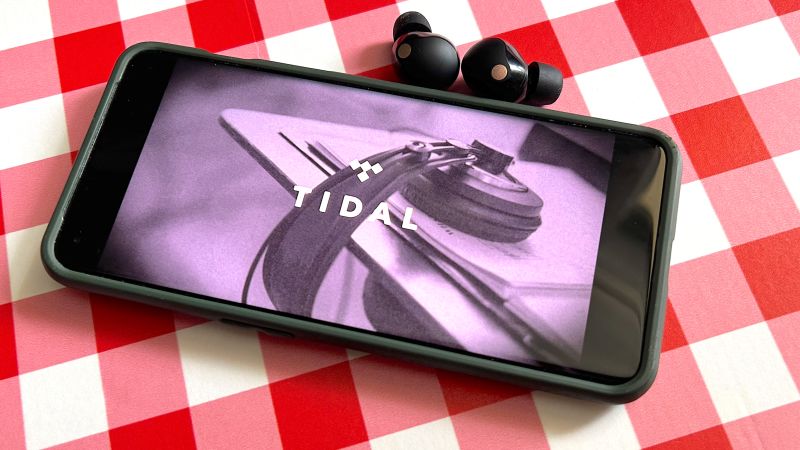Apple Music, Spotify, and Tidal are our top three picks for the best music streaming services. Each platform works similarly, providing access to millions of songs that can be played on multiple electronic devices, including iPhone/iPad, Mac/MacBook, Android phones, and Windows machines. They are also different in many ways.
Spotify has better third-party support and the largest user base, while Apple Music offers excellent iOS/macOS integration and a broader music library. However, none offer the listening experience that Tidal does. Advanced features and support for the most innovative audio formats give the platform a big advantage in the sound department. The company’s artist-centric positioning has also earned it high praise from top artists in the industry, paving the way for exclusive content (e.g. album releases, videos) and record label partnerships.
Tidal has the most expensive subscription tiers, but if your budget allows for the monthly HiFi ($10) or HiFi Plus ($20) plan, you’ll see why The Carters’ favorite streaming service is a must-have for music nerds.
Here’s why you should choose Tidal over Apple Music and Spotify.
Tidal, our favorite music streaming service for audiophiles, gives you the best sound quality options for your money and does a better job of compensating artists than its main competitors.
Tidal comes with four streaming quality settings: Normal, High, HiFi, and Master Quality Authenticated (MQA). HiFi produces CD-quality sound (44.1 kHz/16-bit), while MQA transmits at a staggering 9,216 kilobits per second (kbps) for truly lossless audio that is nearly identical to the original recordings. In other words, MQA reveals more details, errors, and nuances in the tracks.
Apple Music users can enable Apple Lossless Audio Codec (ALAC) to stream lossless files in 192 kHz/24-bit. Unfortunately, the platform does not play lossless audio over Bluetooth. You need a DAC (digital-to-analog converter) and a pair of wired headphones to enjoy high-fidelity audio.
Spotify uses the Ogg Vorbis format to stream at a maximum of 320 kbps per second, which is equivalent to Tidal’s High setting. The service announced a HiFi tier years ago, but there’s no word on a launch date yet.
Apple Music and Spotify offer several features to help you personalize your sound (check out our roundup of AirPods Max tips and tricks to see what the former offers). But Tidal takes audio enhancement to another level with its hidden listening modes.
Alex Bracetti/Keynote USA underlined
First up is Exclusive Mode, a desktop-only feature that bypasses your operating system’s audio mixer and gives Tidal full control over bitrate and sample rate for optimal sound performance. Enabling it increases clarity and depth. Next is Loud Normalization, which automatically adjusts the volume on tracks that may have been mastered at different levels. Then there’s Passthrough MQA which gives newer and older DACs the ability to process Tidal Master tracks after disabling the MQA Core decoder. In other words, nothing is standing in your way of getting the best possible sound quality.
While Apple Music and Spotify have volume optimizers, neither has features like Exclusive Mode and Passthrough MQA.
Spatial audio is one of the most talked about features in the audio world, along with active noise cancellation. Apple Music has an extensive catalog of Dolby Atmos-compatible tracks and uses Apple’s 3D sound format, which widens the soundstage for more immersive listening. The technology is exclusive to the latest AirPods models, including the AirPods Pro 2 (both Lightning and USB-C versions), AirPods 3, and AirPods Max.
Neither Spotify nor Tidal has native spatial audio support. However, Tidal uses Dolby Atmos and works with Sony’s 360 Reality Audio format to deliver convincing 3D sound. Many of Sony’s best headphones support this feature, providing greater accessibility for Apple and Android users.
Plus, Bose’s new Immersive Sound feature, arguably the best spatial audio solution out there, supports any form of stereo content. This gives QuietComfort Ultra and QuietComfort Ultra Earbud owners universal 3D sound. The technology works exceptionally well with Tidal tracks and sounds slightly better than Apple’s version when listening to Apple Music content.
Unfortunately, artists do not generate large incomes from streaming music. So if you’re an advocate for paying artists and feel they deserve more participation in streaming, then you should consider committing to a Tidal subscription. The company pays more per stream than Apple Music and Spotify. See the breakdown below:
- Spotify: up to $0.005 (per transmission)
- apple music: up to $0.007 (per stream)
- Tidal: up to $0.013 (per transmission)
Tidal is one of the few streaming services that pays a little more than 1 cent per stream, and with 80 streams the artist earns a dollar.
All three music streaming services allow you to download music for offline listening. Lossless and Dolby Atmos tracks can be downloaded from Apple Music, but hardware requirements remain intact (be sure to bring your DAC and wired headphones for road trips). Meanwhile, Tidal allows HiFi Plus subscribers to download songs in the highest streaming quality available, including MQA, so you can store and play them on your mobile phone when Wi-Fi is unavailable.
Keynote USA News
For Latest Apple News. Follow @Keynote USA News on Twitter Or Google News.
